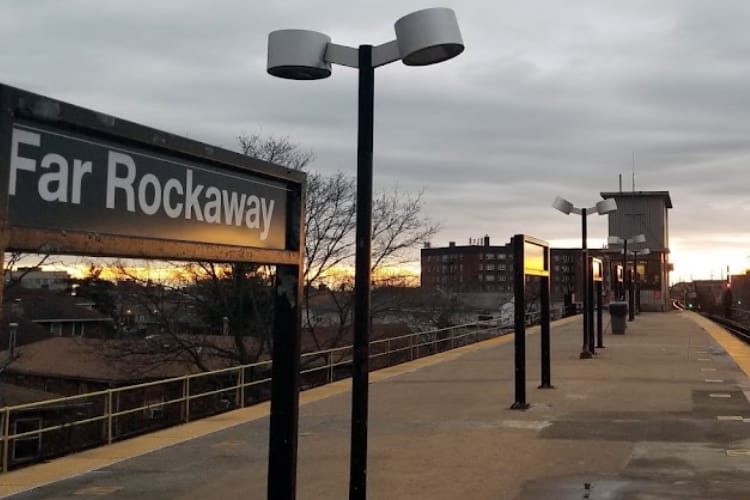Far Rockaway
We Build Trust
Zavza Seal is an experienced general contracting firm with a passion for delivering excellence. Serving Long Island communities including Suffolk, Nassau, Brooklyn, and Queens. We are a one-stop shop construction company that specializes in waterproofing and insulation along with foundation waterproofing services.
Our Expertise Includes:
Waterproofing Services
- Waterproofing basements
- Concrete crack repair
- Paving and sealing driveways and garages
- Waterproofing Parking Structures
- Concrete Commercial Roofs
- French Drains
Insulation Services
- Batt Insulation
- Rolled or Reflective Insulation
- Blown In Insulation
- Spray Foam Insulation
If you are considering any type of solution for foundation waterproofing or insulation services, we are here to help and can provide valuable, time-saving advice.
Get to know Far Rockaway
- Far Rockaway is a neighborhood next to the eastern side of the Rockaway peninsula in New York.
- The community is on the southern boundary of the Atlantic Ocean. – Making it one of the neighborhoods along Rockaway Beach, New York Borough.
- The Zip Code in Far Rockaway is unique to Queens Community District and follows the code of 11691.
- The name “Rockaway” was thought to be an inspiration from the words “place of sands.” it is a translation of the Munsee language of Native American Lenape.
- Henry Hudson and his crew are known to be one of the first groups of Europeans who saw the land of Far Rockaway and Jamaica Bay back in 1609.
- Far Rockaway officially became the land of the English in 1664 after they got it from the Dutch.
- In 1685, the tribal chief of the time and the English governor mutually agreed to sell the Rockaways for £31 sterlings. – Which at the time was a hefty amount of money.
- Rockaway Peninsula was formerly part of The Town of Hempstead. But it later became part of Queens county.
- After a brief disagreement between Palmer and The Town of Hempstead over ownership of the land, they sold it to Richard Cornell in 1687.
- The R.A (Rockaway Association) built the Marine Hotel shortly after buying Cornell’s land. The same hotel burned to ashes in 1864. More hotels and residences have since been constructed in its area.
- In the earlier years of the town, horses and carriages were the only modes of transport in Far Rockaway.
- Zavza Seal is fully operational in Far Rockaway for residents and local businesses.
Nearby Neighborhoods:
Far Rockaway History & Culture
The Rockaway Peninsula was originally designated as part of the Town of Hempstead, then a part of Queens County. Palmer and the Town of Hempstead disputed over who owned Rockaway, so in 1687 he sold the land to Richard Cornell, an iron master from Flushing. Cornell and his family lived on a homestead on what is now Central Avenue, near the shore of the Atlantic Ocean. At his death, Cornell was buried in a small family cemetery, Cornell Cemetery.
In the late 19th century, the Rockaway Association wanted to build a hotel on the Rockaway Peninsula, as it was increasingly popular as a summer destination. The association, consisting of many wealthy members who had homes in the area, bought most of Cornell’s old homestead property. They developed the Marine Pavilion on that site, which attracted such guests as Henry Wadsworth Longfellow, Washington Irving, and the Vanderbilt family. The Rockaway Association also built the Rockaway Turnpike. The Marine Hotel burned to the ground in 1864, but more hotels and private residences were built in the area.
In the 19th century, people traveled to the Rockaways by horse-drawn carriages or on horseback. A ferry powered by steam sailed from Lower Manhattan to Brooklyn. By the 1880s, the Long Island Rail Road’s Rockaway Beach Branch was built to serve Far Rockaway station. The steam railroad went to Long Island City and Flatbush Terminal (now Atlantic Terminal). When it opened in the 1880s, this connection stimulated population growth on the Rockaway Peninsula. Benjamin Mott gave the LIRR 7 acres (2.8 ha) of land for a railroad depot. Land values increased and businesses in the area grew, and by 1888, Far Rockaway was a relatively large village. It incorporated as a village on September 19 of that year.
By 1898, the area was incorporated into the Greater City of New York, which included Queens. Far Rockaway, Hammels, and Arverne, all of Queens, tried to secede from the city several times. In 1915 and 1917, a bill approving the secession passed in the legislature but was vetoed by the New York City mayor John Purroy Mitchel.

